
Paul Adams
Editors Note: * PMP Hall of Famer
1. Paul Adams* — The 1962-63 president of the then-National Pest Control Association (NPCA) was among the first researchers to decide how to use and apply dichlorodiphenyltrichloroethane (DDT) and work with chlordane. The founder and owner of Adams Pest Control wrote the first minimum termite treatment standards for Louisiana, which was the first state to develop and implement such guidelines.

Orlando and Lonnie Alonso
2., 3. Orlando & Lonnie Alonso* — In 1961, Orlando Alonso emigrated from Cuba to the U.S. with his wife, 7-year-old daughter and 5-year-old son, Orlando “Lonnie” Jr. Four years before, the senior Alonso had attended the 1957 convention of NPCA, now known as the National Pest Management Association (NPMA), to ask for membership — a first for the then 24-year-old association. After a panel traveled to Havana to review his company, he became the NPCA’s first international member. The family became U.S. citizens, and Lonnie has been known for his unwavering pest control industry support, especially when it comes to legislative matters.

Roy Ashton
4. Roy Ashton* — The vice chair and COO of Western Exterminator noticed the things people did right. He served as the sidekick for the company’s “Little Man with the Hammer” for more than 50 years.

Stan Baker
5. Stan Baker* — Baker, who purchased the J.T. Eaton Co. in 1949, conducted much of the early research on paraffin bait blocks. Under Baker’s guidance, J.T. Eaton & Co. also pioneered other ideas that helped shape rodent control, including a guaranteed satisfaction program and emergency service delivery within 48 hours. He is the grandfather of the company’s current president, Dale Baker, who also is a past president of Pi Chi Omega.
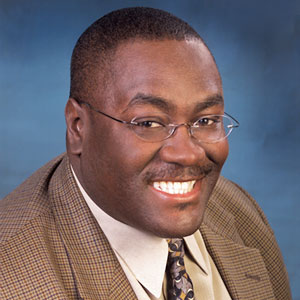
Lee Barrett
6. Lee Barrett — When Barrett was named president of Nisus in 2021, it was the culmination of nearly three decades in the borate industry, including the past 24 years with Nisus. He is known and respected throughout the industry as a knowledgeable pest control troubleshooter, speaker and business development leader.
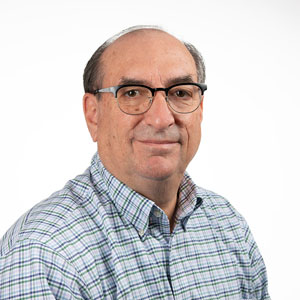
Greg Baumann
7. Greg Baumann* — Over the course of his career, the vice president of global technical services and regulatory affairs for Nisus developed food industry standards that made it easier for pest management professionals (PMPs) to maintain food-processing plants. Baumann was the former vice president and senior scientist at the NPMA, and he received the Award for Outstanding Service to Quality while working at The Hershey Co.
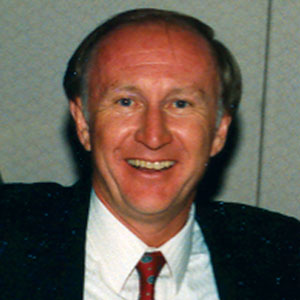
Dr. Gary Bennett
8. Dr. Gary Bennett* — This Purdue University entomology professor emeritus conducted toxicology tests and established physiological resistance levels for German cockroach strains. As coordinator of Purdue University’s Urban and Industrial Pest Management Center, Dr. Bennett extended his leading-edge research to include studies of cockroach behavioral resistance. Dr. Bennett also was a longtime organizer of Purdue University’s annual pest management conference, and a co-author of recent editions of Truman’s Scientific Guide to Pest Management Operations.

Judy Black, BCE
9. Judy Black, BCE* — Rollins’ vice president of quality assurance and technical services has been a prominent trainer, speaker and troubleshooter for the industry since 1995, and currently serves on Pest Management Professional’s (PMP’s) Editorial Advisory Board. A past Pi Chi Omega president, Black received the NPMA’s Women of Excellence award in 2012.

Bill Blasingame
10. Bill Blasingame* — While working for the Georgia Department of Entomology, the then-vice president and technical director of Getz Exterminators and Services drafted the Georgia Structural Pest Control Act and created the Georgia Structural Pest Commission as part of it. The 1972-73 NPCA president later served as the director of services in the training and consulting division of Stephenson Chemical Co.

Mark Boyd
11. Mark Boyd — The president of Control Solutions Inc. (CSI) is a second-generation PMP who, in the early 1980s, helped his family grow Fords Exterminating into Fords Chemical, a legacy company of what this leading industry innovator is today. CSI is renowned for developing effective, innovative and economical solutions PMPs can apply.

Ed Bradbury
12. Ed Bradbury* — After a career at Western, Bradbury began Viking Pest Control in 1980 and grew it to a multi-million dollar company before it was acquired by Anticimex in 2017, one of the Stockholm, Swedish-based company’s first acquisitions. His son Ryan continues in the industry today as chairman and CEO of Rockit Pest Control.

Bill Brehm, BCE
13. Bill Brehm, BCE* — This co-inventor of the compressed air sprayer (he’s the “B” in B&G) helped establish professional ethics among distributors and improved the industry through scholarships and education. He helped revolutionize the sub-slab injector, was a member of the first class of structural pest control graduates from Purdue University, and was credited with founding the United Producers, Formulators and Distributors Association (UPFDA).

Bill Buettner
14. Bill Buettner* — Buettner was the first president and full-time executive secretary of the National Association of Exterminators and Fumigators (NAEF), which became the NPCA (now NPMA). Along with Orkin’s Ted Oser, he convinced lawmakers pest control was an essential industry to civilians and should be exempt from certain wartime restrictions during World War II.

Al and Sandee Burger
15., 16. Al and Sandee Burger* — This dynamic duo expanded “Bugs” Burger Bug Killers into 44 states, making it the largest independently owned pest management company in the country at the time of their retirement in 1986. Their money-back guarantee changed the way the industry sold and maintained commercial accounts.

John R. Cook Sr.
17. John R. Cook Sr.* — This second-generation PMP took Cook’s Pest Control from a small business to a regional powerhouse, especially after he and his wife, Jo, came up with the “Cookie” mascot in the 1960s. Cook, the 1973-74 NPCA president, began a small insect specimen collection to help his technicians identify pests. It, too, grew from hosting schoolchildren tours to today being the $17 million, newly built Cook Museum of Natural Science in Decatur, Ala.

Norm Cooper
18. Norm Cooper* — The former president of Exterminating Services Co. started Abby Exterminating in 1954 and sold it to ESCO in 1971. He served in every office of the NPCA except secretary. The 1991-1992 NPCA president developed the association’s “Guardians of the Environment” logo, which was in place for many years.

Noad Corley
19. Noad Corley* — Known for his member recruiting, Corley believed strongly in training. He created the NPCA Bird Control Manual. He served two terms as president of the Texas Pest Control Association (TPCA) and Greater Dallas Pest Control Association (GDPCA). He also sat on the Texas Pest Control Board and NPCA board of directors. As recognition, he was granted lifetime NPCA membership.

Dr. Bobby Corrigan
20. Dr. Bobby Corrigan* — This pre-eminent rodentologist is an educator and innovator on vertebrate pests. A co-author of Truman’s Scientific Guide to Pest Management Operations, and former animal damage control specialist for the extension office at Purdue University, Dr. Corrigan owns RMC Consulting.

Al Cossetta
21. Al Cossetta* — The manager of the National Extermination Products Co. helped found the Kansas City Exterminating Society in 1933. The owner of two pest control companies realized his dream of an industry trade journal that same year when the first issue of Exterminators Log (now PMP) appeared.

Dr. John June “J.J.” Davis
22. Dr. John June “J.J.” Davis* — The head of the entomology department at Purdue University was a maverick for attending the NAEF’s Third Annual Convention. In 1950, he started an urban pest management studies program at Purdue University, the only university at the time to offer it as a four-year major.

Richard Deering
23. Richard Deering* — In the 1970s, this PMP and lawn care operator found a need for industry-specific software. After some tinkering with computers, he met that need by starting ServicePro, which is a legacy company of ServiceTitan.

Bob and Judy Dold
24., 25. Bob and Judy Dold* — Bob’s father, C. Norman Dold, was the 1935-36 NPCA president. Bob followed in his footsteps by serving as the 1983-84 president and is also a past president of both the Indiana and Illinois pest control associations. In 2001, Judy became the NPMA’s second female president. For decades, the Dolds have grown what was the Chicago, Ill.-based arm of Rose Exterminators, which was founded in 1860, to the independent powerhouse Rose Pest Solutions is today. Today, the Dolds’ son, Bob Dold Jr., serves as president of the family-owned business.

Dr. Walter Ebeling
26. Dr. Walter Ebeling* — The author of the seminal book Urban Entomology, Dr. Ebeling was a research entomologist, accomplished author, international consultant and valued teacher. He forged paths in insect behavior and control and laid the foundation of strong science for PMPs. The tenured professor at UCLA also became the first researcher in the western U.S. to promote urban entomology and its research.

Mel Edelstein
27. Mel Edelstein* — The man behind the Certified Pest Control Operators Association (CPCO) of Florida became licensed and started his own business, Aim Pest Control, with his wife, Carole. He served the Florida Pest Control Association (FPCA), known today as the Florida Pest Management Association (FPMA), as a committee chairman, assistant director and director. He was a driving force in the alliance among the CPCO, FPMA, Certified Operators of Southwest Florida and the Florida Turfgrass Association.

Norm Ehman
28. Norm Ehmann* — The vice president emeritus for Van Waters and Rogers (VW&R), the forerunner to today’s Veseris, was a professional trainer. He was one of the few people performing pest control training on the West Coast in the 1950s. His training programs took on new meaning with the use of slides, and the VW&R series of slides — consisting of more than 8,000 pest images — was launched in 1982.

Julius C. Ehrlich
29. Julius C. Ehrlich* — The founder of the J.C. Ehrlich Exterminating Co. brought respect and professionalism to an industry that had suffered the effects of a bad reputation. From its humble beginnings in 1928, the company grew into one of the largest privately owned pest control businesses in North America before its purchase by Rentokil Initial in 2006.

Tom Evans
30. Tom Evans* — For 20 years, he marketed heptachlor and chlordane for Velsicol and was a major player in the chlordane cancellation hearings in the 1970s. The former CEO of Southern Mill Creek Products of Ohio almost single-handedly turned around the Greater Cleveland Pest Control Association. He also helped found and organize the Ohio Turf Foundation.

Tom Fortson
31. Tom Fortson* — The legacy of this longtime president of the company his grandparents built, Terminix Service Inc., lives on today with his sons Scott and Nelson, and cousin Lex Knox and his son Trevor. He is also known for helping to found and serving as the first chairman of the Professional Pest Management Alliance (PPMA).

Dr. Jim Fredericks
32. Dr. Jim Fredericks, BCE — A longtime PMP “Callback Cures” columnist, Dr. Fredericks is both the NPMA’s senior vice president of public affairs and the PPMA’s executive director — overseeing all matters related to growing, protecting, promoting and defending the industry with the public.

Dr. Austin M. Frishman
33. Dr. Austin Frishman, BCE Emeritus* — His bait project was the first one cockroaches ate. The former owner of a sanitation inspection business worked with Southern Mill Creek Products of Florida to help make glue boards easier to use. Constantly in demand as an industry expert, “Doc” has appeared on national TV programs discussing pest management and continues to be an occasional contributor to PMP.

Dr. Jerome Goddard
34. Dr. Jerome Goddard* — This “infotainer” has written more than 150 scientific publications about medical entomology and six books. Serving as the State Medical Entomologist at the Mississippi Department of Health, Dr. Goddard designed, implemented and supervised all vector control programs relating to public health throughout the state. Today, he serves as an extension professor at Mississippi State University.

Dr. Roger Gold
35. Dr. Roger Gold* — At the University of Arizona, he was a one-man show in the training process for guidelines requiring new certification for those applying pesticides in urban and agricultural areas. At the University of Nebraska, he established the Center for Environmental Programs. He developed many funding sources to support programs in urban entomology for the development of training materials. Today, he is professor emeritus for Texas A&M University in College Station, Texas.
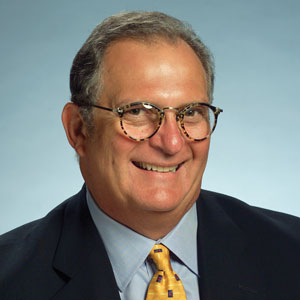
Norm Goldenberg, BCE
36. Norm Goldenberg, BCE* — The current president of Namron Business Associates served as senior vice president of government affairs and industry relations for Terminix for 28 years, until his retirement in 2013. He got his start in 1962 as an entomologist with Truly Nolen. Throughout his career, Goldenberg has been a strong supporter of the industry, and served as the 1978-79 NPCA president.

Harvey Goldglantz
37. Harvey Goldglantz* — PMP’s longtime “Marketing Matters” columnist started a pest control company as a teen, in addition to being an off-Broadway actor who also recorded music. By mid-career, he was heavily involved with the Pennsylvania Pest Management Association and the NPMA, and in 1992, became a marketing consultant for the industry.

Vic Hammel
38. Vic Hammel* — As the third-generation leader of the company his great-grandfather founded, Hammel was responsible for taking J.C. Ehrlich Co. and expanding it into the largest independent company in the industry. He also cofounded PestSure Insurance and helped lead the PPMA as vice chairman. Hammel was a key force behind the company’s merger with Rentokil.

Dr. Laurel Hansen
39. Dr. Laurel Hansen* — Dr. Hansen is a renowned ant researcher who continues her adjunct teaching today. In 2022, Cascade Pest Control initiated an entomology scholarship at Washington State University in her name to honor her more than 50 years of contributions to the pest management industry.

Paul Hardy
40. J. Paul Hardy* — Hardy, a longtime columnist and current member of PMP’s Editorial Advisory Board, began boiling down Truman’s Scientific Guide to Pest Management Operations into a series of 30-minute training courses for Orkin a month after he started with the company in 1961. He was 19 years old. In 1988, he developed the first national training program for Orkin. Hardy also had a hand in creating the first pest management program focused on treating the outside of structures and helped introduce foaming machines to the industry.

Dr. Hal Harlan, BCE
41. Dr. Hal Harlan, BCE — In 1973, this military medical entomologist collected a colony of bed bugs from Fort Dix, N.J. Also an NPMA entomologist, he fed them (often nonchalantly doing so in front of TV and newspaper reporters) on his arm and studied them for research, even before their resurgence in the late 1990s. The “Harlan strain” is still maintained in labs as a gold standard for study today, and the man himself long has been revered as a leading expert on the pest.

Gene Harrington
42. Gene Harrington* — The former NPMA vice president of government affairs was instrumental in developing and implementing workable pest management legislation and rulemaking in various states. He also played a key role in 2000 in defeating legislation banning pesticides use on various federal properties and helped make a workable measure that became law.

Dr. Ralph Heal
43. Dr. Ralph Heal* — During his 23-year tenure as the NPCA’s technical director and executive director (1949-1972), Dr. Heal established a research fund for universities and developed the association’s slide and audiotape training programs. He helped association members gain respect and defended them as government regulation increased. The entomologist also conducted research and development on insect repellents for Merck.

Stoy Hedges
44. Stoy Hedges, BCE* — The late entomologist wrote close to 200 trade journal articles as well as multiple field guides. He also served as editorial director for several editions of the Mallis Handbook of Pest Control. A professional sanitarian and member of Pi Chi Omega, he was instrumental in commercializing the use of vacuums to facilitate sensitive environment pest management.
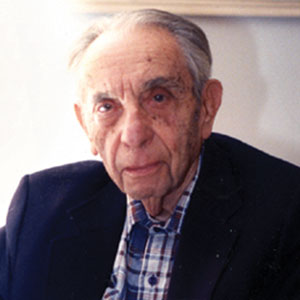
Jacques Hess
45. Jacques Hess* — The founding member of NAEF worked to get more advertising in the public sphere so there was “sunshine on the industry,” instead of the negative connotation of the period. In 1927, he pushed the Reuben H. Donnelly Co., which produced telephone directories, to accept ads from pest management companies — something it hadn’t done previously.

Dr. Motokazu “Moto” Hirao
46. Dr. Motokazu “Moto” Hirao* — The owner of the Hirao Biological Institute helped fund the original 20 companies in the Japanese pest management industry in the early 1970s. He also discovered the chemical cycloheximide, which proved to be a taste repellent to rodents. The founding member of the Federation of Asia and Oceania Pest Managers Association (FAOPMA) in Tokyo helped the Japanese government develop industry regulations.
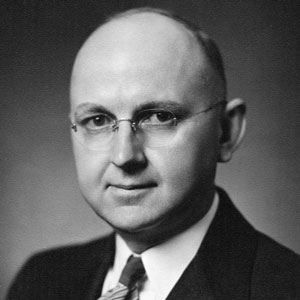
George Hockenyos
47. George Hockenyos* — The founder of Sentinel Pest Control experimented with different materials and manufactured dichlorodiphenyltrichloroethane (DDT) long before it came to the market. The 1947-48 NPCA president was instrumental in creating the Serviceman’s Manual in 1955, which sought to standardize the industry.

Charlie Hromada
48. Charlie Hromada* — A longtime Terminix leader, Hromada helped formulate termite control chemicals and was responsible for developing training programs and technical manuals. He obtained seven state pest control licenses and lobbied for the industry with concerns about the Federal Insecticide, Fungicide and Rodenticide Act (FIFRA). Instrumental in making supervisory certification the rule, he was responsible for supplier operations in the form of Paragon Professional Products Group.
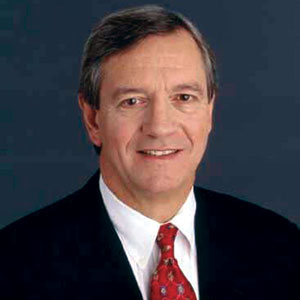
E. Allen James
49. E. Allen James* — The former president and CEO of the International Sanitary Supply Association led the Responsible Industry for a Sound Environment (RISE) from its infancy to a successful advocacy group. Under his leadership, RISE grew from a small idea into the powerhouse opponent of the anti-pesticide movement it is today.

Bob Jenkins Sr.
50. Bob Jenkins Sr.* — The father of PMP “ABCs of Growth” columnists Bobby, Raleigh and Dennis Jenkins, Bob Sr. epitomized the entrepreneurial spirit that is prevalent in pest control. He was president of the Texas Pest Control Association in 1980 and the NPCA in 1983. He purchased several NPCA past presidents’ companies, as well as big regional companies, before taking retirement and helping each of his sons launch their own businesses in Texas’ Austin, Houston and Dallas markets, respectively.

Harry Katz
51. Harry Katz* — The Pi Chi Omega member was an early supporter of diatomaceous earth (DE) and helped introduce the use of aerosol injections into the holes of wood to kill termites and other insects. He helped publicize the use of vacuum cleaners as part of integrated pest management (IPM) in the early 1990s.

Dr. John Klotz
52. Dr. John Klotz* — From the late 1980s on, this entomologist had been a friend of the industry and a leading ant researcher. In 2011, his life changed in an instant: He went into cardiac arrest while in a swimming pool, and suffered a traumatic brain injury. CPR by a quick-thinking bystander saved his life; today he is remembered for the knowledge and insights he shared with many PMPs.

Austin “Brick” Kness
53. Austin “Brick” Kness — In 1924, this widowed father of six invented the first multiple-catch mousetrap while working as a janitor at an Iowa high school. Mice were invading the lunches of students, so he took matters into his own hands and created the prototype for one of the many products Kness Pest Defense offers PMPs today.

Dr. Phil Koehler
54. Dr. Phil Koehler* — This infamous cat hater (seriously, he usually will tell you this within minutes of meeting him) has launched the career of many industry luminaries who had the good fortune of doing undergraduate or graduate work with him at the University of Florida (UF). Now a distinguished professor emeritus of UF, Dr. Koehler is a co-creator of the Inzecto Mosquito Trap.

Bob Kunst
55. Bob Kunst* — As the 1995-96 NPCA president, Kunst helped fortify the association’s joint state membership program and helped triple membership. The former Terminix and Orkin manager launched educational events to move the association away from its dues-based model. Now owner of Fischer Environmental Consulting, the past president of the Louisiana Pest Management Association was selected as NPMA Committee Chairperson of the Year twice.
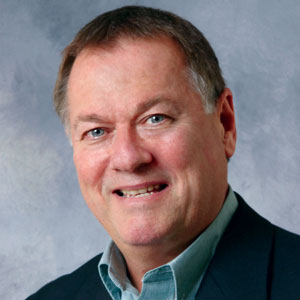
Dr. Mark Lacey
56. Dr. Mark Lacey* — The former sales representative for Paragon and Liphatech gained national prominence by writing myriad technical articles for pest control industry trade magazines. The NPMA seminar host and consultant’s technical knowledge and detailed photographs educated a generation of PMPs.

Steve Levy
57. Steve Levy* — Bell Labs founder Malcolm Stack hired Levy from outside the industry, as general manager in 2000, and named him CEO in 2002. Levy was up to the challenge. He helped build the company into the powerhouse it is today, with a sterling reputation for research and product stewardship. Bell also is renowned for its philanthropic work and environmental stewardship, particularly with helping to eradicate non-native and predatory rodents from the Galápagos Islands.

Dr. Vernard Lewis
58. Dr. Vernard Lewis* — A cooperative extension specialist emeritus from the University of California, Berkeley spent 27 years as a faculty member there, after having received his bachelor’s, master’s and doctoral degrees there in the preceding 15 years. To pay for his education, this industry-renowned termite expert did a stint in prison — that is, as head of pest management at San Quentin Prison.

Arnold Mallis
59. Arnold Mallis* — Best remembered for launching his eponymous Handbook of Pest Control, he reportedly wrote the first five editions by himself at night after he finished work. He began work on the book in 1939, and the first edition appeared in 1945.

Dr. Doug Mampe
60. Dr. Doug Mampe* — The former technical director of the NPCA (working with the association from 1965-1974) produced more than 2,000 pages of technical releases and developed a committee system of five members plus unlimited correspondents to permit the association to afford committee meetings when necessary. The technical director and general manager of Western Industries and Residex developed procedures for applying termiticides on properties with wells. He also served as a longtime columnist and technical editor for PMP.

Harvey Massey
61. Harvey Massey* — A former No. 1 sales manager at Orkin, and vice president at Terminix, he became chairman and CEO of Massey Services — today a $220 million-plus/year company that he bought from the Walker family in 1985, when the firm’s revenue was $4 million. Massey was widely known for giving back to the industry and his community.
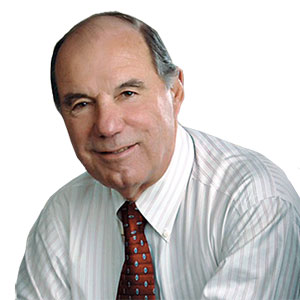
Ed Martin
62. Ed Martin* — In 1962, with a loan co-signed by his father, Martin became the youngest Terminix licensee in the nation at the ripe old age of 27. Thanks to discovering the presence of Formosan termites in his hometown of New Orleans, La., Martin became the go-to industry expert on all aspects of this pest. His legacy lives on in his grandson, Joe Martin, a principal in Terminix New Orleans.

Vern McKinzie, BCE
63. Vern McKinzie, BCE* — The 1984-85 NPCA president started a pest control business in 1974. He served on the NPCA board and chaired the association when the U.S. Occupational Safety & Health Administration (OSHA) was created. He also helped write and present the first procedures manual for OSHA compliance. The former president of the Kansas Pest Control Association (KPCA) was the legislative representative for 10 years during the establishment of the U.S. Environmental Protection Agency (EPA).

Dr. Dini Miller
64. Dr. Dini Miller* — The professor with the department of entomology at Virginia Tech University and urban pest management specialist for Virginia is a leading industry researcher and sought-after technical presenter.

Jerry Mix
65. Jerry Mix* — As editor and publisher of Pest Control (now PMP), Mix put complex issues into laymen’s terms. His reporting brought industry issues to a wider audience so more people could become involved in hashing them out.

Dave Mueller, BCE
66. Dave Mueller, BCE* — This Purdue University entomology grad long has given back to the industry that has helped support the two stored product pest businesses he founded at the ages of 25 and 27, respectively: Insects Limited and Fumigation Service & Supply. Sons Tom and Pete work in the family businesses.

Dr. Paul Müller
67. Dr. Paul Müller — The Swiss chemist synthesized DDT and received the 1948 Nobel Prize in Physiology or Medicine for his work. Two DDT based products, Gesarol and Neocide, became available in 1942.

Jim Nelson
68. Jim Nelson* — From 1948 to 1967, the editor and publisher of what’s now known as PMP oversaw the publishing of Purdue University’s correspondence course, which was designed to further technicians’ education about pest biology, behavior and control. Nelson also helped launch Truman’s Scientific Guide to Pest Management Operations and Landscape Management magazine.

Jay Nixon
69. Jay Nixon* — This NPCA president accomplished his goal of starting up the joint state association program during his 1993-94 term. Nixon got his industry start at the firm he ended up becoming president of: American Pest Management, today an Anticimex company. The biologist still works for the company as a contract entomologist for the U.S. Department of State and the National Institutes of Health.

Truly Wheatfield Nolen
70. Truly Wheatfield Nolen* — The former head of Indianapolis’ Department of Sanitation in Indiana, started what’s now known as Nozzle Nolen, which handled some of the largest fumigation jobs decades ago and was one of the first to use sulfuryl fluoride. He is also the grandfather of Scarlett Nolen, a PMP online columnist and president of Truly Nolen Pest Control.

Millard and Ada Oldham
71., 72. Millard and Ada Oldham* — This couple started their own distribution company, Oldham Chemicals, in the Southeast in 1966. Today, the company boasts 14 offices and still goes by its founding motto, “Everything for the pest control industry.”

Otto Orkin
73. Otto Orkin* — The progressive businessman is credited with being one of the first to bring in public health personnel and focus on sanitation issues in the 1940s and 1950s. A consummate marketer and technical innovator, Orkin was also one of the first PMPs to use DDT effectively in the private sector.
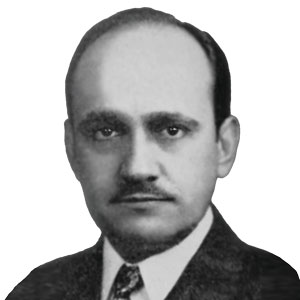
Ted Oser
74. Ted Oser* — As Otto Orkin’s nephew who did most of his work behind-the-scenes, Oser also was instrumental in helping Bill Buettner obtain the “essential service” designation for PMPs during World War II. This designation meant they could continue protecting the home front without the worry of rationing gasoline or becoming drafted. He was unanimously elected to serve two consecutive NPCA terms as president (1944-1946).

Dr. John Osmun
75. Dr. John Osmun* — The former chief entomologist for the First Army and Merck was an industry researcher, educator and regulator for six decades. As the former head of the entomology department at Purdue University, he developed a new curriculum (six new courses) in structural pest control in the 1950s. He also helped form the pest management fraternity Pi Chi Omega.

Larry Pinto
76. Larry Pinto — This longtime PMP columnist has run the consulting firm Pinto & Associates for decades. One of the firm’s most popular newsletters, Techletter, still regularly reaches the industry today in email form.
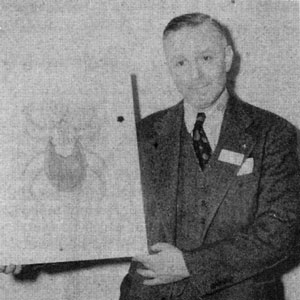
Charles Pomerantz
77. Charles Pomerantz* — The self-trained entomologist played a pivotal role in identifying the etiology of a 1946 outbreak in New York City of what was later named rickettsialpox. He was credited with identifying it as a zoonotic disease that spread through mice and mites that infested rodents. Several species of mites, fleas, chiggers and other arthropods also were named in his honor by creating the taxonomy family Pomerantziidae.

Mike Potter
78. Dr. Mike Potter* — This professor emeritus at the University of Kentucky performed pioneering studies showing termites can be managed effectively with nonrepellent liquid termiticides applied mainly around buildings’ exteriors. The former national technical director for Orkin also collaborated on seminal research confirming the effectiveness of barrier treatments for mosquitoes. His work with bed bug research still resonates today.

Don Reierson
79. Don Reierson* — This Boston Marathoner has spent most of his career as a staff research associate at the University of California, Riverside. A mentor to many, Reierson is also known for his work on studying the biology and control of cockroaches, ants, fleas and termites.

Roland Rhodes
80. Roland Rhodes* — This Navy veteran founded industry distribution company Rhodes Chemical in 1962, and seven years later became a charter member of UPFDA. Rhodes was an advocate for both industry education and for PMPs to get involved in understanding and helping shape responsible regulations.

Gary Rollins
81. Gary W. Rollins* — Rollins joined Orkin in 1965, shortly after his family company purchased the firm. He started as a technician and worked his way up, taking on several positions before joining the management team. Today, he serves as chairman. This 2003 recipient of the NPMA’s Pinnacle Award also helped establish the O. Wayne Rollins/Orkin Endowed Chair in Urban Entomology at Purdue University, and donated funds to build the Orkin Termite Training Facility at the University of Florida.

Solomon Rose
82. Solomon Rose* — The founder of what’s known today as Rose Pest Solutions (est. 1860) is thought to be the first true PMP. He sold pyrethrum powders to the Union Army during the U.S. Civil War. He also sold rat embalmers, spray guns and powder dusters over the counter, by mail order and door to door.

Bob Rosenberg
83. Bob Rosenberg* — The former executive vice president of the NPMA had a 27-year career with the association, advocating for the industry’s interests with federal, state and local government.

Bob Russell
84. Bob Russell* — A longtime PMP columnist, Russell’s name was nearly synonymous with Orkin, and later Arrow Exterminators. He played a significant role in getting the EPA to recognize industry needs regarding regulations. The 1986-87 NPCA president also served on the Georgia Structural Pest Control Commission and was chairman of the Georgia Pest Control Association government affairs committee.

Dr. Mike Rust
85. Dr. Mike Rust* — This professor emeritus of the University of California, Riverside developed the urban entomology program to match the urban growth in the Los Angeles and San Diego areas. His research on termites and how insecticides are transferred allowed PMPs to treat structures using insecticide more judiciously.

Joseph Edwin “J.E.” Sameth
86. Joseph Edwin “J.E.” Sameth* — The founder of Western Pest Services gave 70 years of his life to the industry. Sameth helped found the New Jersey Pest Control Association and the NPMA, serving as the latter’s president in 1950-51. In 1956, he helped start Copesan, which enabled local and regional pest control companies to sell services nationally. He also established distribution firm Residex in 1947. He is the father of Dick Sameth.
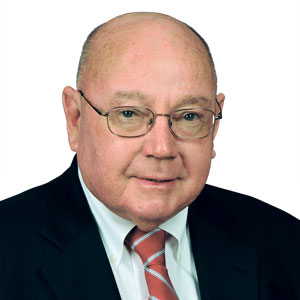
Dick Sameth
87. Dick Sameth* — As the son of the legendary J.E. Sameth, Dick Sameth had big shoes to fill — but he was more than up for the task, serving as the NPCA’s 1996-97 president. Two decades prior, he worked with Orkin’s Bob Russell and Terminix’s Charlie Hromada to ensure FIFRA would not hamper pest management efforts.

Dempsey Sapp Sr.
88. Dempsey Sapp Sr.* — In 1949, two days after earning his master’s degree in entomology, this Navy veteran opened Florida Pest Control & Chemical Co. Later, he helped develop the under-slab drilling treatment for termite control. He also was greatly involved with the Florida Pest Management Association and affected much of the state’s regulation still in effect today regarding pest control.

Raymond “Ed” Scherzinger
89. Raymond “Ed” Scherzinger* — Scherzinger was one of the original investors in PCT magazine, which was launched in 1972 as a training tool for pest control technicians. He blazed a path for small pest management companies by how he positioned and marketed his family-owned business, serving as an early adopter of advertising by direct mail, radio and eventually 10-second TV spots. His legacy lives on in his sons, Steve and Glenn, and grandsons Eric, Kurt and Corbin.

Dr. Robert Snetsinger
90. Dr. Robert Snetsinger* — The late author of the definitive history of the pest control industry, The Ratcatcher’s Child, spent the bulk of his career in the Department of Entomology for Pennsylvania State University. The urban entomologist was not only a mentor to many, he was an industry advocate who was greatly interested in the history of the pest management profession.

Dr. Thomas Snyder
91. Dr. Thomas “Tommy Termite” Snyder* — The entomologist was an authority on the taxonomy, biology and control of termites. Dr. Snyder, who worked for the U.S. Department of Agriculture (USDA) and served as a research associate in the entomology department at the U.S. National Museum, also worked at the USDA’s Harrison Experimental Station (later named the Gulfport Lab) in Mississippi. While there, he pushed for more basic termite research.

Dr. Phil Spear
92. Dr. Phil Spear* — The former NPCA technical director (1954-80) was responsible for creating the so-called “Green Papers” that would become industry benchmarks. Under his watch, the association developed a program that raised money to fund research at universities that would conduct product testing. He also worked with regulatory agencies to establish new pesticide use laws and guidelines.

Bill Spitz
93. Bill Spitz* — During his 1971-72 NPCA presidency, Spitz spearheaded the association’s first public relations campaign, which helped educate the public about the important work of PMPs. He also helped develop a series of pest management training books. The developer of a new method of treating for termites — by drilling into building slabs — made national headlines, and he made several TV appearances for his work with termite-sniffing dogs.

Dr. Cisse Spragins
94. Dr. Cisse Spragins* — The founder and CEO of Rockwell Labs started her career in pest management working part time as a researcher at Bell Laboratories after a chance meeting with the owner, Malcolm Stack. Today, she is renowned for her innovations in pest control products, as well as her work with UPFDA and Pi Chi Omega.
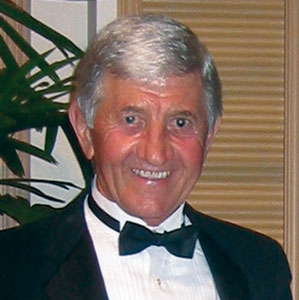
Malcolm Stack
95. Malcolm Stack* — The founder of Bell Laboratories helped transform the rodent management industry from mere “ratcatchers” to professional problem solvers with his passion for research and training. He worked on the original rodent cake formula to bring it into compliance with EPA requirements. He bought Wil-Kil Pest Control, was a board member for the NPMA and joined UPFDA.

Jim Steckel
96. Jim Steckel* — Shortly after Steckel took over his father’s business in 1961, he felt compelled to join the leadership track for the NPCA. During his 1970-71 presidency, he raised its membership to 400 and played a vital role in fending off government regulation by educating regulators at the federal and state levels. His father, H.K. Steckel, served as the 1937-38 NPCA president, while his son, Plunkett’s Pest Control’s Scott Steckel, served as the 2020-2022 president of the association.

Hal Stein
97. Hal Stein* — In the 1970s, Stein took over San Francisco, Calif.-based Crane Pest Control from his father-in-law and grew it into a successful business. The 1975-76 NPCA president championed the cause of science over emotion and rational thinking over fear-mongering, winning over many PMPs to help spread this approach to pest control marketing and branding.

Chuck Steinmetz
98. Chuck Steinmetz* — For nearly five decades, this philanthropist played a prominent role in expanding companies in the industry, having worked his way up from being an Orkin termite technician in the early 1960s.

Dan Stout
99. Dan Stout* — The senior vice president of technical development for Whitmire Micro-Gen Research Laboratories, a legacy company of BASF, held more than 30 patents. That includes one for the active ingredient abamectin, a patent he held jointly with the manufacturer Merck.

Dominique Stumpf, CAE, CMP
100. Dominique Stumpf, CAE — Stumpf joined the NPMA in 1997 as an events coordinator, and since 2016 has led the association as CEO. She has contributed mightily to the continuous growth of attendance and financial return for PestWorld, the association’s annual convention.

Dr. Nan-Yao Su
101. Dr. Nan-Yao Su* — Dr. Su’s name is practically synonymous with the Sentricon Termite Baiting System since its industry debut in 1995. But this distinguished professor of entomology at the University of Florida is still conducting termite research today and is a mentor to many.

Billy Tesh
102. Billy Tesh* — The 2014-15 NPMA president founded and still runs the one-stop-shopping Crawlspace Depot, and still runs (and grows) the pest control company his uncle founded, Pest Management Systems Inc. (PMi). In 1985, at age 26, he was elected president of the North Carolina Pest Management Association. He and the association helped defeat all five state bills that would have negatively affected the industry that year.

Dr. Claude Thomas
103. Dr. Claude Thomas* — The former Southeast technical representative for B&G Equipment Co.’s research at the Urban Pest Control Research Center focused on the distribution of liquid and foam termiticide applied beneath concrete slabs. His work on the spread and soil penetration of termiticide applied to subslab voids remains the definitive research about the topic.
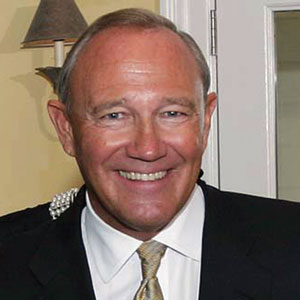
Joe Thomas
104. Joe Thomas* — As chairman of Arrow Exterminators, Thomas has been around the pest management industry his entire life. His father, Starkey Thomas, began his pest management career in 1939 with Otto Orkin before beginning Arrow in 1964. Joe Thomas’ leadership at Arrow, and within the industry, raises the bar for professionalism.
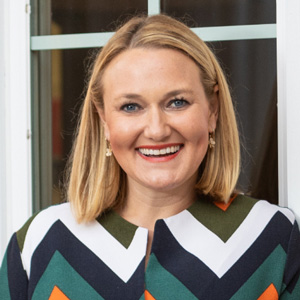
Emily Thomas Kendrick
105. Emily Thomas Kendrick — This third-generation CEO of Arrow Exterminators, the daughter of Joe Thomas, has spent more than 25 years in the industry. She has served multiple terms on the National Pest Management Association (NPMA) Board of Directors and is active in its Professional Women in Pest Management (PWIPM) organization. She has been honored with several awards from the industry and business organizations for her leadership, and teammate empowerment initiatives.

Rufus “Red” Tindol Jr.
106. Rufus “Red” Tindol Jr.* — In the early 1970s, Tindol created cohesion among the NPCA, Orkin and Terminix so that as a trio, they could help temper the EPA’s initial plans for wide-sweeping changes. The 1976-77 and the 1988-89 NPCA president also was a public health engineer for the Georgia Department of Public Health; started the Georgia Exterminating Co. and sold it to Orkin; served as a chairman of the Georgia Pest Control Commission; and founded Tindol Services and sold the pest management portion of the business to Waste Management. Grandson Chuck Tindol served as the 2016-17 NPMA president.

Vern Toblan
107. Vern Toblan*— From 2000-2014, Toblan’s name was top of mind when anyone mentioned Pi Chi Omega, for he was executive director of the industry fraternity for that period. He also was a major part of the development of the insecticide Ficam in the early 1970s, thanks to his work with Envu’s legacy companies, Bayer and Chipman Chemical.

Larry Treleven
108. Larry Treleven* — Treleven has been a part of Sprague Pest Solutions since his dad brought him home as a newborn from the hospital in a work vehicle in 1948. In addition to being a business and industry leader, the 1994-95 NPCA president also is a founding member of the PPMA and has played a role in several industry governing boards over the years for groups in Washington, Oregon, Idaho and Colorado.

Dr. Lee Truman
109. Dr. Lee Truman* — The original author of Truman’s Scientific Guide to Pest Control Operations and former president of Arab Pest Control, Dr. Truman started his own company, Pest Control Services. The 1963-64 NPCA president provided municipal fogging for mosquito control, fly control for food processors, industrial weed control, rodent control for country grain elevators, bird control for office buildings, and moth proofing for carpets.

Vern Walter
110. Vern Walter* — The late president of consulting service WAW bought a Terminix branch in Texas and served as chairman of the Structural Pest Control Board of Texas. A partner at Abash Pest Control, he was on the NPCA’s government affairs committee for 10 years.

Mark Weisburger
111. Mark Weisburger* — Weisburger was the third of four generations to run B. & D. A. Weisburger Insurance, which has been providing specialty pest control insurance since 1934 and today is part of PBC Insurance.

Blanton Whitmire
112. Blanton Whitmire* — In 1962, Whitmire coined the phrase and method of “crack-and-crevice” treatments almost singlehandedly. Soon after, he decided to institute formal training to technicians nationwide, and the Whitmire Institute of Technology was born. For decades, Whitmire seminars were known as the gold standard.

Dr. Charles Wright
113. Dr. Charles Wright* — The first state inspector of structural pest control in the North Carolina Department of Agriculture and former technical director for Wilson Exterminating Co. was among the first to investigate and document how traditional application methods led to pesticide drift, which led to the standard crack-and-crevice treatments.

Clayton “Bud” Wright
114. Clayton “Bud” Wright* — Wright, who built the largest distributorship dedicated primarily to PMPs in the Southwest, owned and managed his own pest management firm, C. Wright Associates. He ran a branch of B&G Co. while establishing three companies of his own. One his greatest contributions to the industry was in the area of education, as he worked with chemical companies to conduct product tests on his property and in the field.
Leave A Comment